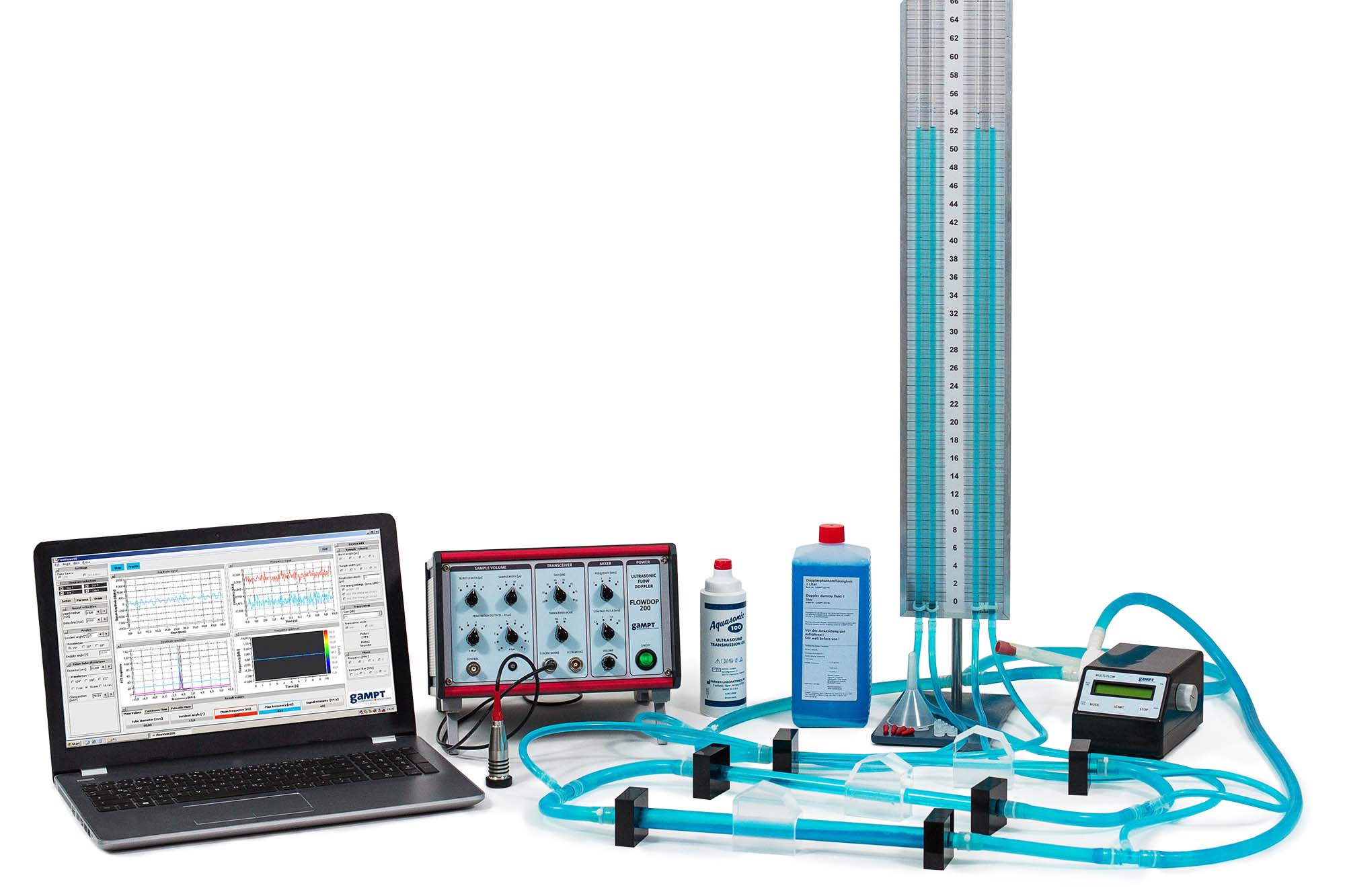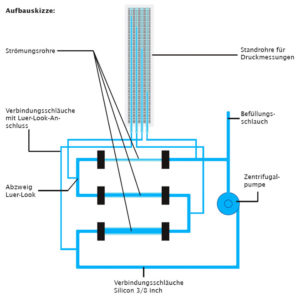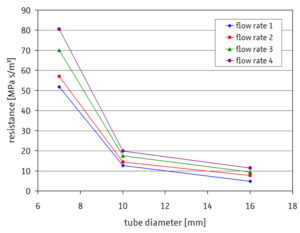Article No. VK-PHY15
PHY15 Fluid Mechanics
Demonstration of fundamental fluid laws during flow measurements using the ultrasonic Doppler effect
- Subject matter of the experiment
- Theoretical and practical aspects of the experiment
- Results
- Equipment
- Related Experiments
Flow measurements according to the ultrasonic Doppler method are used to demonstrate fundamental laws governing the flow of liquids in pipes and their dependence on the flow velocity and the pipe geometry.
Keywords: Laminar and turbulent flow, continuity equation, Reynolds number, Bernoulli’s equation, Hagen-Poiseuille equation, flow velocity, flow resistance, pressure scales, static and dynamic pressure, viscosity
From the flow rates measured and the specific crosssectional areas, the corresponding flow can be calculated. This is nearly equivalent in this experimental setup for all pipe diameters for the same settings of the centrifugal pump, thus satisfying the continuity equation. As a further result, the diagram below shows the flow resistance R determined for different pipe diameters and different flows. This shows the strong dependence on the pipe radius r to be expected from the Hagen-Poiseuille equation: R ~ 1/r4.
| Ord.no. | Description |
|---|---|
| 50400 | Ultrasonic Doppler FlowDop200 |
| 10152 | Ultrasonic probe 2 MHz |
| 50130 | Centrifugal pump MultiFlow |
| 50140 | Doppler fluid |
| 50150 | Standpipes |
| 50201 | Flow measuring set |
| 70200 | Ultrasonic gel |


